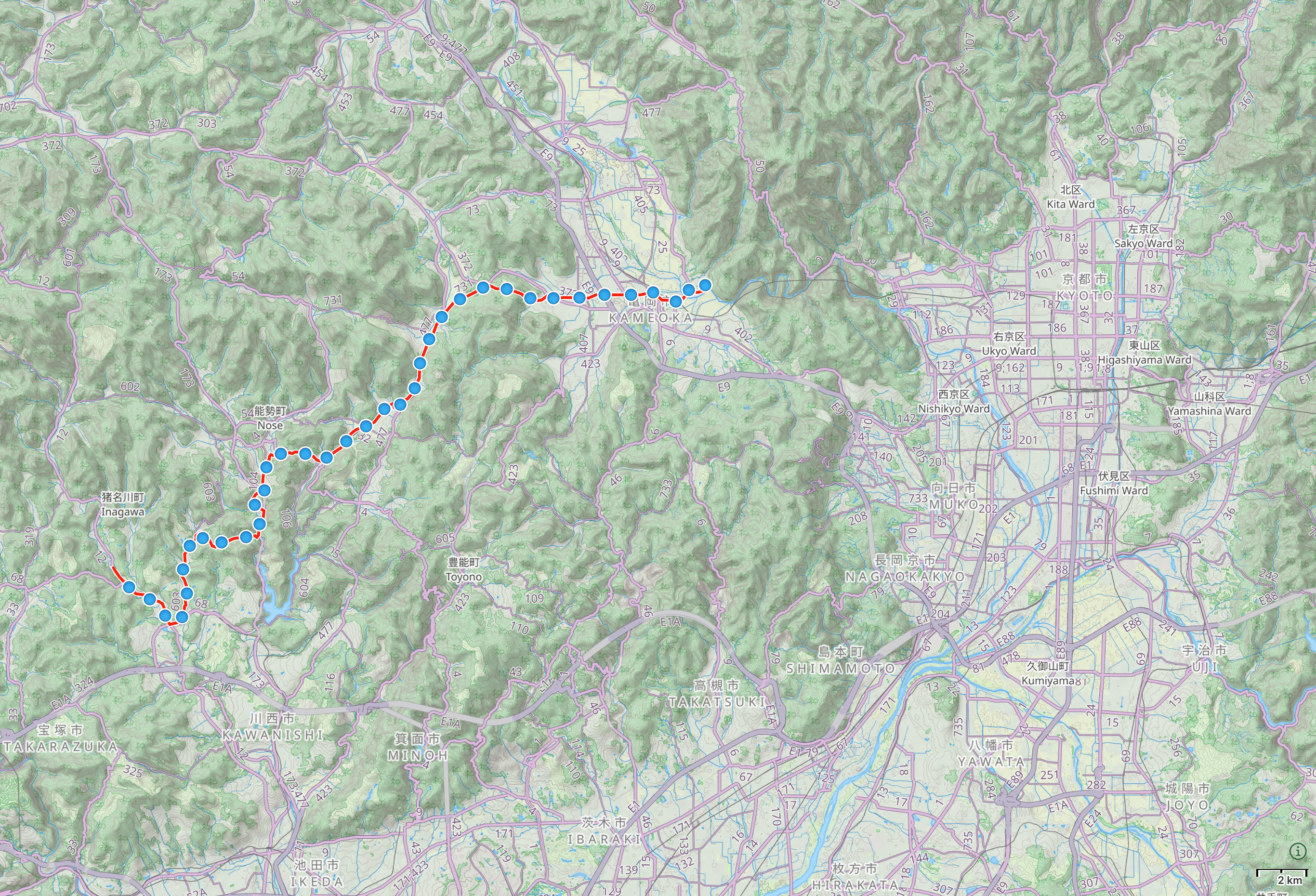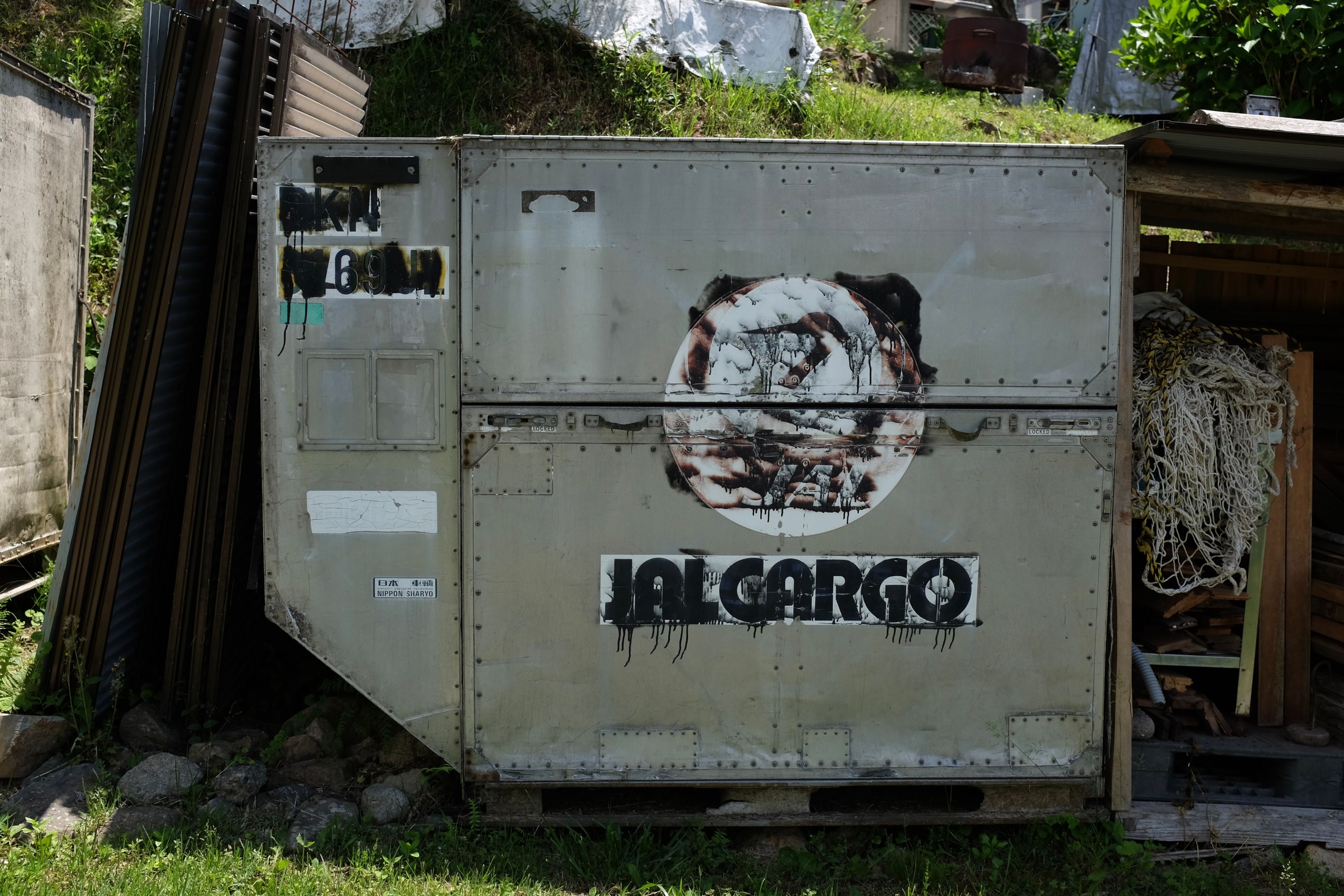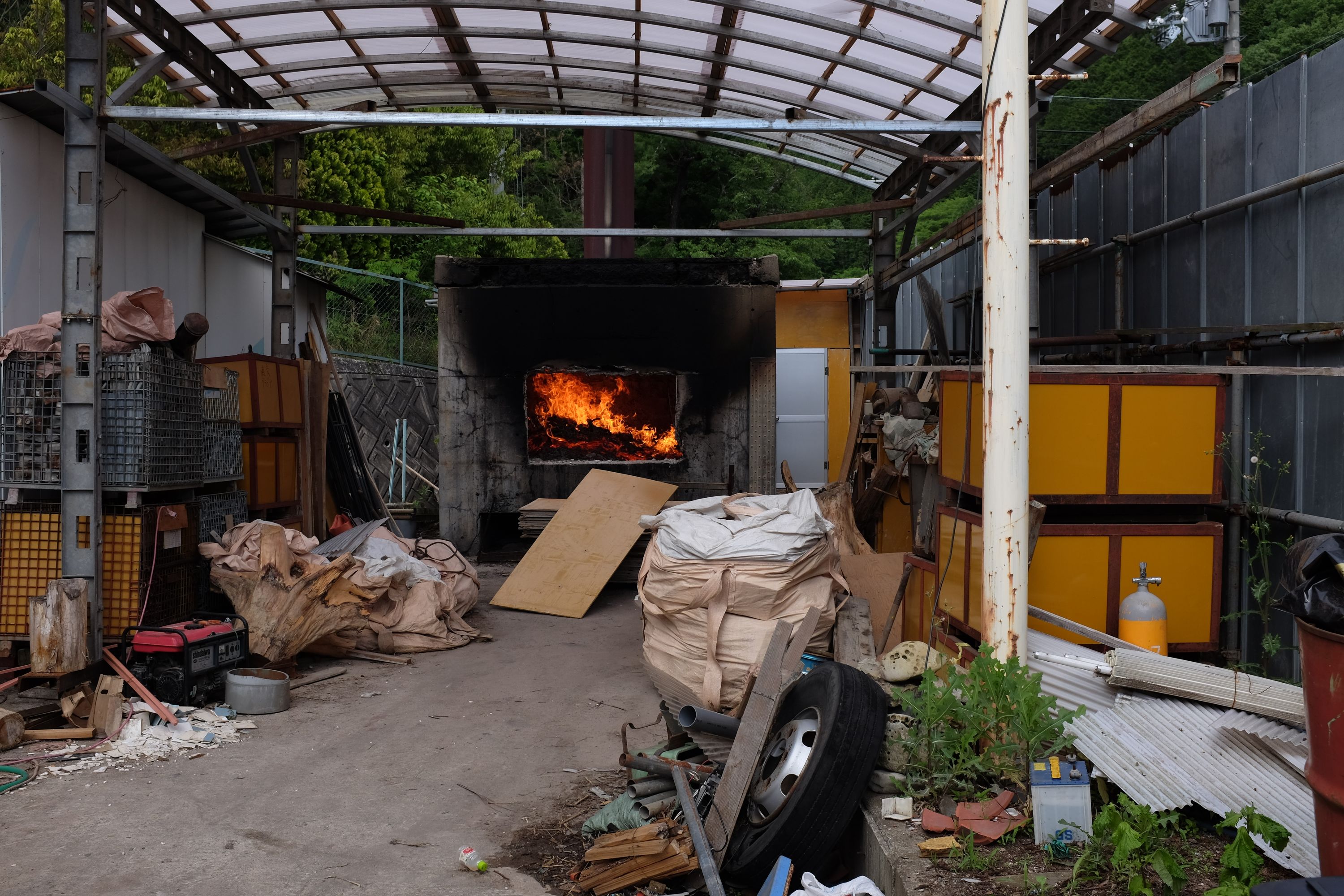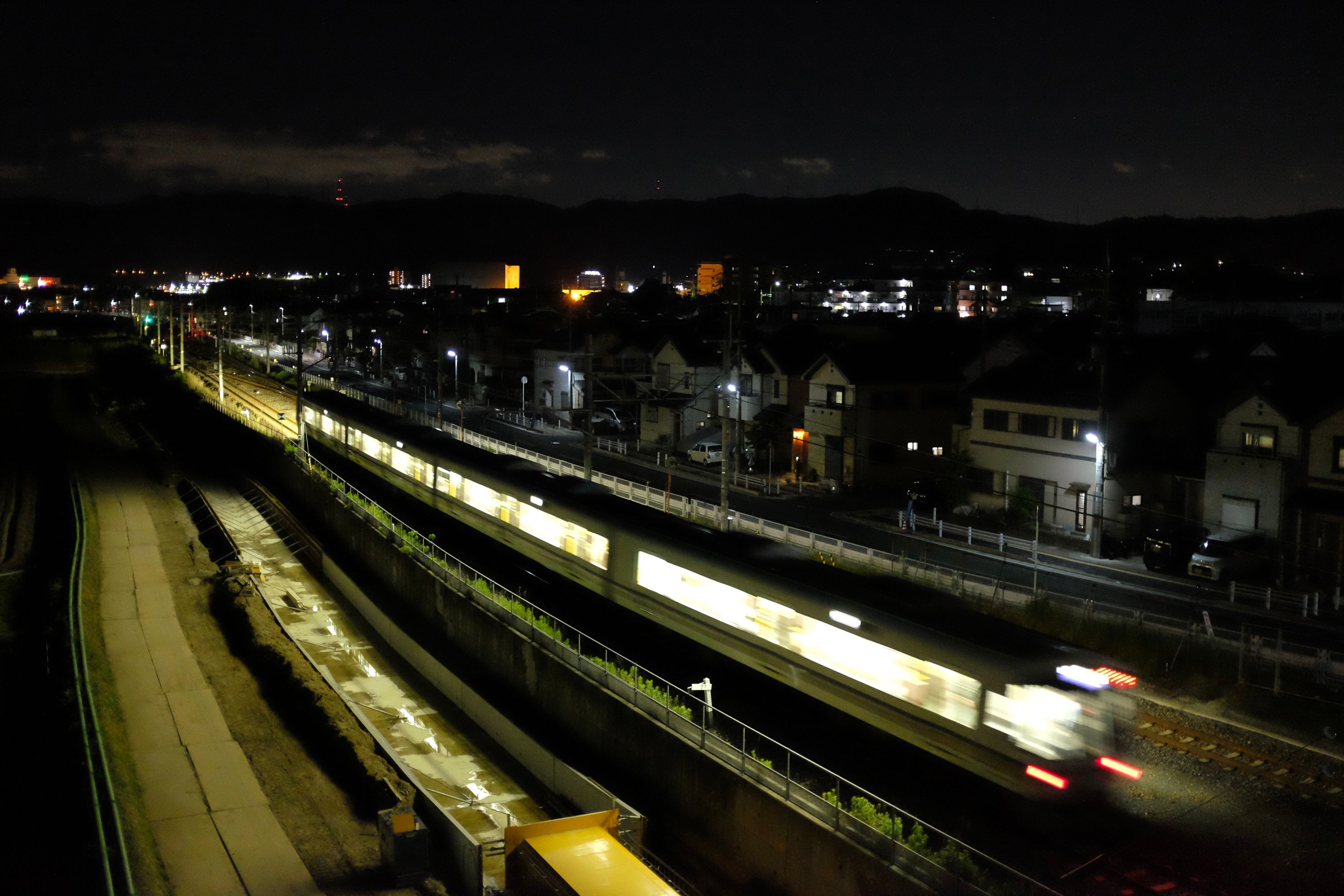Day 45 (May 27, 2017)
Inagawa, Hyōgo → Kameoka, Kyōto


Every dying village and abandoned house in Japan is accessible on a perfectly surfaced asphalt road, but here, in the three hours I spent walking across a spur of Osaka Prefecture, was a dirt road running parallel to a stream, the first I walked on since I had left Kagoshima. Under starched white cumuli, crickets chirping in the long grass tickling my bare ankles, I reeled from the memory of summer walks, a handful of slides all projected at once. But there were no poppies to pindot the land, and the fields were flooded rice paddies, not the gold of wheat in early summer.





I had only been aware of zoomorphic calligraphy in Arabic script, but it can apparently be done with Japanese kanji, too. The characters which make up this wild boar, 有楽荘, are not an obscure term for the animal, as one might hope, but simply the name of the countryside pension on the outskirts of Kameoka where the sign was hung. Perhaps not as masterly as Farah Behbehani’s rendering of The Conference of the Birds, but any zoomorphic calligraphy is better than none.


Similarly to how an island will cast a halo of driftwood, seabirds, and currents, visible to the gifted navigator long before he spots any land, great cities give themselves away with light. This is how I first saw Erbil after walking for a month across the Zagros, a great glow beyond the white-gold fields of Kurdistan, and this is how I now saw Kyōto, a white-gold glow over the low hills which separate the city from the rice paddies of Kameoka. Night trains and tree frogs were the only sounds, and when I woke up the next morning, a woman walking her dog greeted me with a can of cold coffee.

